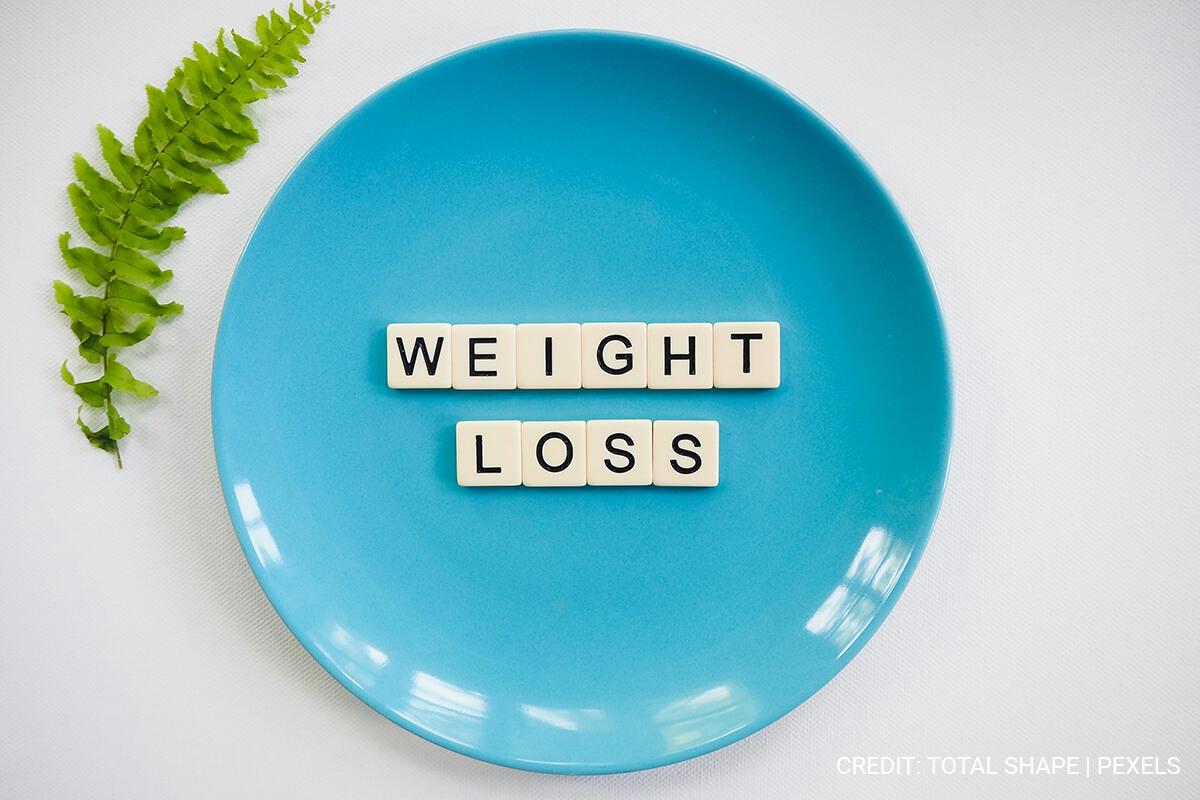Achieving healthy weight loss doesn’t have to be a challenge; there are simple and (more importantly) healthy ways of managing obesity to make yourself healthier, inside and out. The way to that weight is always a personal journey (and one that requires a tailored approach at that). While relying on generic diets and fitness plans may offer some guidance, the pitfall of using these methods is in their generic nature. These methods very often fail to account for an individual patient’s needs and factors (e.g. lifestyles, body types, and goals) that can make that journey to losing weight so personal. While the obvious solution is to make a personalized plan for weight loss, actually creating. Such a plan requires that you establish sustainable habits to support long-term success.
Luckily, doing just that doesn’t have to be hard either. With this guide. You can arm yourself with some key strategies to help you build a personalized weight loss plan (focused specifically on nutrition, exercise, lifestyle adjustments, and mindset tailored to your particular needs). Once you’ve taken your unique needs into account, you can make the process of developing a plan to not just lose weight (as well as promote the mindset and habits to see you through to the end) much easier on yourself.
Understanding Your Body and Goals
Before starting any endeavour, it’s always essential to assess what you have and where you’re going. In this case, you’ll need to gauge your current health status and set realistic weight loss goals for yourself. As a personal guide, certain factors (e.g. metabolism, activity level, food preferences, and medical conditions) may also be relevant to your situation; keep those in mind to tailor your approach and ensure you’re addressing the right issues affecting your weight.
Assessing Your Starting Point
- –Body Composition: Weight alone does not define health. Other factors (e.g. body fat percentage, muscle mass, and waist circumference) can provide a clearer picture of progress and help you gauge your path as you move forward.
- Activity Level: Keeping a healthy metabolism and giving yourself ample activity is critical for burning energy through the day. Pay close attention to your daily movement and energy expenditure to craft an appropriate exercise plan.
- Dietary Habits: There’s more to gauging your condition than identifying what you eat. When, how, and how much may be just as telling, and just as crucial to identifying patterns that may be hindering your progress.
- Lifestyle Factors: Finally, sleep, stress, and hydration are some other factors that play a role in weight gain or loss. If need be, review your own condition to determine if these factors apply to you and impact your weight.
Setting Realistic Goals
When it comes to losing weight, it’s vital to set realistic goals for yourself. It’s not just a matter of setting attainable goals you can meet in a given timeframe; achieving these goals gives you milestones you can gradually work toward as you progress to your ultimate goal. Finding feasible goals also boost your morale and make it easier to go the distance.
- -Aim for gradual, steady progress rather than rapid weight loss.
- Focus on building sustainable habits instead of following restrictive diets.
- Consider non-scale victories (e.g. improved energy levels, better sleep, and increased strength).
Personalized Nutrition Strategies
Nutrition is the foundation of any effective weight loss plan. One effective way to enable weight loss is to avoid the generic diets; instead, focus on creating a meal plan that suits your tastes, preferences, and lifestyle while ensuring balanced nutrition.
Choosing Whole, Nutrient-Dense Foods

A well-rounded diet includes whole foods rich in essential nutrients. If achieving the feeling of fullness is an issue, prioritize fresh, unprocessed ingredients. They’ll help with satiety (and boost your overall health while you’re at it).
- Protein: Among the benefits of protein is support for muscle maintenance and maintaining the feeling of fullness for longer. Some healthy sources of protein include lean meats, fish, eggs, dairy, legumes, and plant-based options like tofu.
- Healthy Fats: Healthy fats are necessary for brain function and hormone production. Particular healthy examples include avocados, nuts, seeds, olive oil, and fatty fish.
- Fibre-Rich Carbohydrates: Getting ample fibre is a must to promote digestion and sustain your energy through the day. Prioritize whole grains, fruits, vegetables, and legumes.
- Hydration: Drinking enough water is vital for metabolism and digestion.
Tailoring Meal Timing and Portions
Many meal plans also advise you to eat at specific times for better satiety. However, rather than following rigid meal plans, adopt a schedule that’s more friendly to your lifestyle and preferences. You know your body best. And you ought to be more effective at knowing when to eat than a generic, impersonal guide. Some basic rules of thumb that may help include:
- –Eating Regularly: Space your meals evenly throughout the day; keeping yourself sated all day can help manage hunger and prevent overeating.
- Mindful Eating: Keep an eye out for your hunger cues to head off the pangs.When you do eat, eat slowly to improve digestion and portion control.
- Custom Portion Sizes: Take your energy needs into account and portion your meal sizes accordingly to ensure a balance of macronutrients.
Managing Special Dietary Needs
For individuals with specific dietary restrictions or preferences (such as vegetarianism, food allergies, or cultural considerations), devise your meal plan around those requirements without. Compromising on meal sizes and making yourself hungry through the day.
Customizing Your Fitness Routine
Exercise is an essential component of a healthy weight loss plan, but the best workout for you is one that fits your interests and abilities.

Choosing the Right Types of Exercise
A well-rounded fitness plan should include a mix of different activities to target different muscles and offer different stimulation for your body:
- Cardiovascular Exercise: Exercises like walking, cycling, swimming, and running are good for the heart, and can improve endurance and burn calories.
- Strength Training: Building muscle helps boost metabolism and supports body composition goals. This includes bodyweight exercises, resistance training, or weightlifting.
- Flexibility and Mobility Work: Yoga, stretching, and mobility exercises can boost the metabolism, while also helping to prevent injuries and improve movement and flexibility.
- Recreational Activities: Dancing, hiking, or playing sports can add some variety and enjoyment to your routine.
Adjusting to Your Fitness Level
- Beginners: Start with low-impact activities (such as walking or swimming) before gradually increasing intensity.
- Intermediate to Advanced: Incorporate progressive overload by increasing the difficulty by adding more resistance, duration, or complexity as you progress.
- Personalized Scheduling: Choose a workout frequency and duration that fits your lifestyle and energy levels.
Making Movement a Part of Daily Life
Beyond structured workouts, increasing daily moment even in small ways can contribute to overall energy expenditure. Small changes (such as taking the stairs, standing more often, or going for short walks) can make a difference over time.
Optimizing Lifestyle Factors
Healthy weight loss goes beyond diet and exercise. Your daily habits, stress levels, and sleep quality significantly influence progress.
Prioritizing Quality Sleep
Lack of sleep can affect metabolism, hunger hormones, and energy levels. To support weight loss, aim for consistent, restful sleep by:
- -Establishing a bedtime routine.
- Avoiding screens and heavy meals before bed.
- Creating a comfortable sleeping environment.
Managing Stress Effectively
Chronic stress can lead to emotional eating and weight gain. Implementing some stress-reducing strategies can support overall well-being:
- -Practising relaxation techniques (such as deep breathing or meditation).
- Engaging in enjoyable hobbies (e.g. woodworking or origami).
- Seeking social support from friends and family.
Building a Supportive Environment
Your surroundings can impact your ability to maintain healthy habits. Building your environment to be more conducive to weight loss is a great way to organize your surroundings to enable your goal. It’s also an effective way of. Transforming your mindset to set yourself up for success. Consider:
- Stocking your kitchen with nutritious foods.
- Keeping workout gear accessible.
- Surrounding yourself with supportive people who encourage your journey.
Mindset and Motivation for Long-Term Success
Sustaining weight loss requires a positive mindset and self-motivation. Developing a strong mental foundation can help overcome challenges and maintain progress.
Developing a Growth Mindset
- View your setbacks as learning experiences rather than failures.
- Focus on consistency, and not perfection.
- Celebrate your small achievements along the way.
Setting and Adjusting Goals
As you progress, your goals may evolve. Regularly assessing and adjusting your plan ensures continued motivation and effectiveness.
– Short-Term Goals: Daily or weekly targets, such as trying a new recipe or increasing your step count.
-Long-Term Goals: Broader objectives, such as improving endurance, increasing strength, or maintaining weight loss.
Tracking Progress Without Obsession
Monitoring your progress can provide motivation, but it is essential to do so without fixating on numbers. Consider tracking:
- How you feel physically and mentally.
- Improvements in strength, endurance, or flexibility.
- Clothing fit and body composition changes.
These goals are ones you can gauge concretely (especialyl over time); however, they aren’t number-based and are less capable of being reduced to a numeers game that can impact your motivation to continue.
Staying Flexible and Adapting to Changes
Life circumstances, stress levels, and priorities shift over time. A custom weight loss plan should be adaptable, allowing for adjustments based on changing needs and goals.
Creating Your Custom Plan: Putting It All Together
In summary, designing a personalized weight loss strategy involves integrating a number of factors (nutrition, exercise, lifestyle adjustments, and mindset) into a plan that suits your unique needs.
Step-by-Step Approach
- Assess Your Current Habits and Goals – Identify areas for improvement and set realistic objectives.
- Plan Balanced Meals – Incorporate whole, nutrient-dense foods while considering meal timing and portion sizes.
- Select Enjoyable Physical Activities – Build a fitness routine that aligns with your interests and abilities.
- Optimize Lifestyle Factors – Prioritise sleep, stress management, and a supportive environment.
- Monitor Progress and Adjust as Needed – Stay flexible and refine your plan over time.
By focusing on sustainable habits and personal preferences, you can create a weight loss plan that not only helps you reach your goals but also enhances your overall well-being.
When it comes to finding effective methods of helping you lose weight, HOW Clinic has your back. Our team combines compassionate care with Obesity board-certified expertise to ensure we offer patient-oriented care to help you on your personal journey to a healthier you. Give us a call now at (519) 340-2744 to get the support you need to lose weight and keep yourself on the path.

